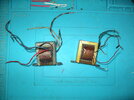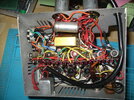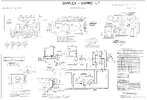paddy ryan
Member
With reference to finding an unknown voltage of a transformer, the advice I have been given is to connect the primary to power etc, BUT how do I know what amount of power to put on, when its an unknown voltage? I don't want to blow the transformer by putting too much through, and how would that tell me anyway that its the right amount of power/ Advice appreciated please? by the way these are small transformers recovered from an old projector amp, not a main power transformer.




